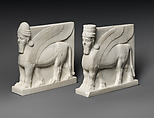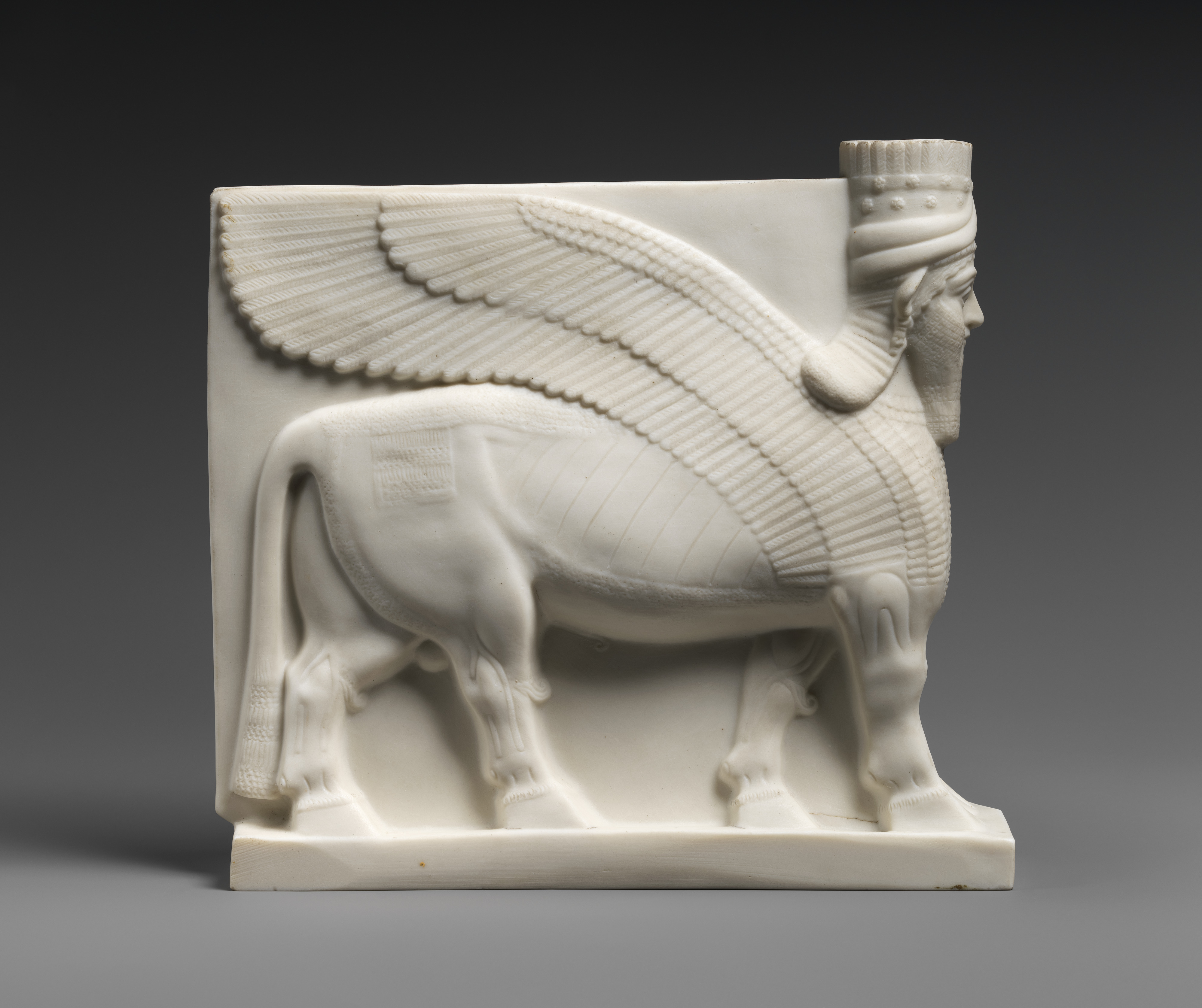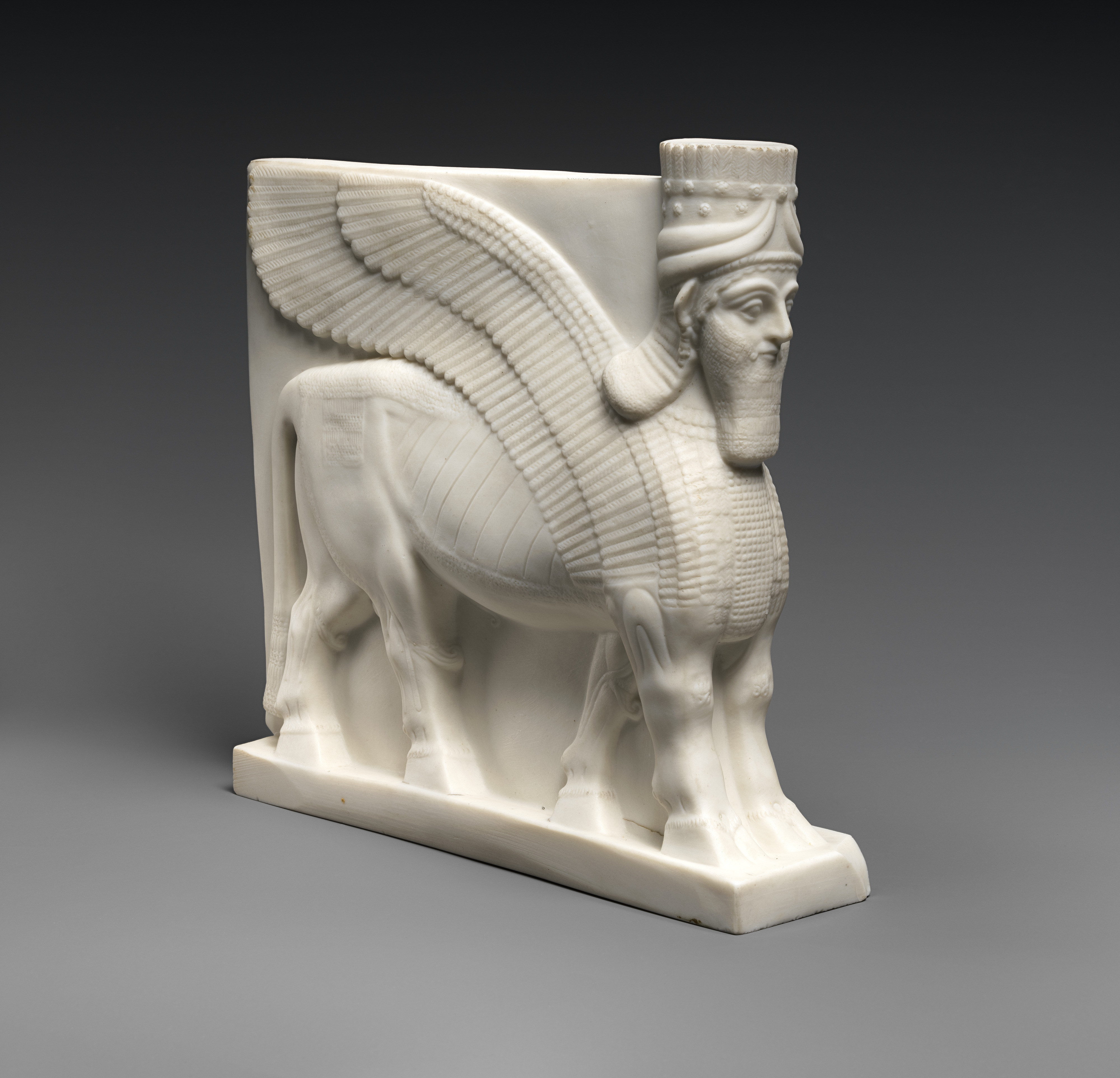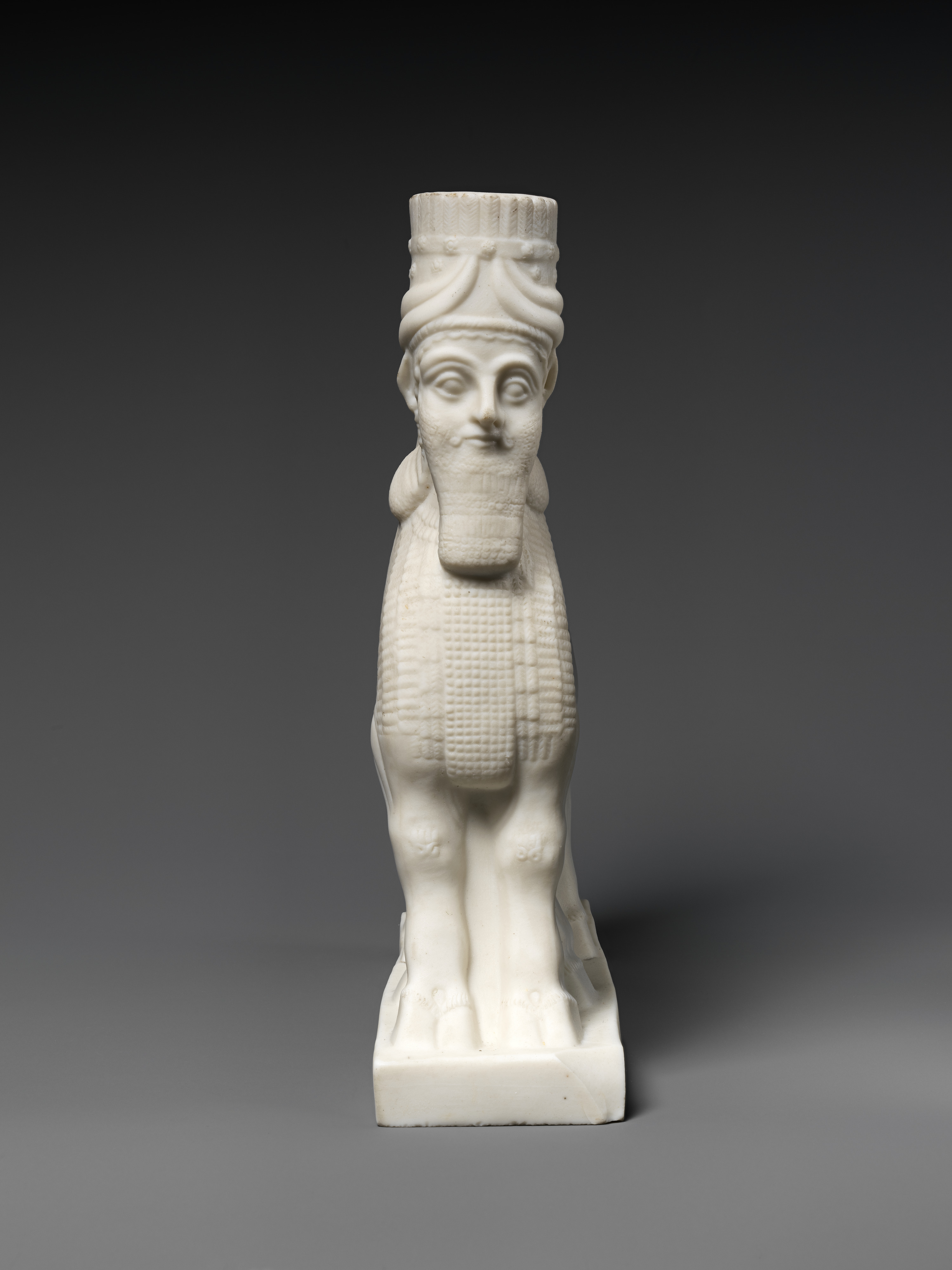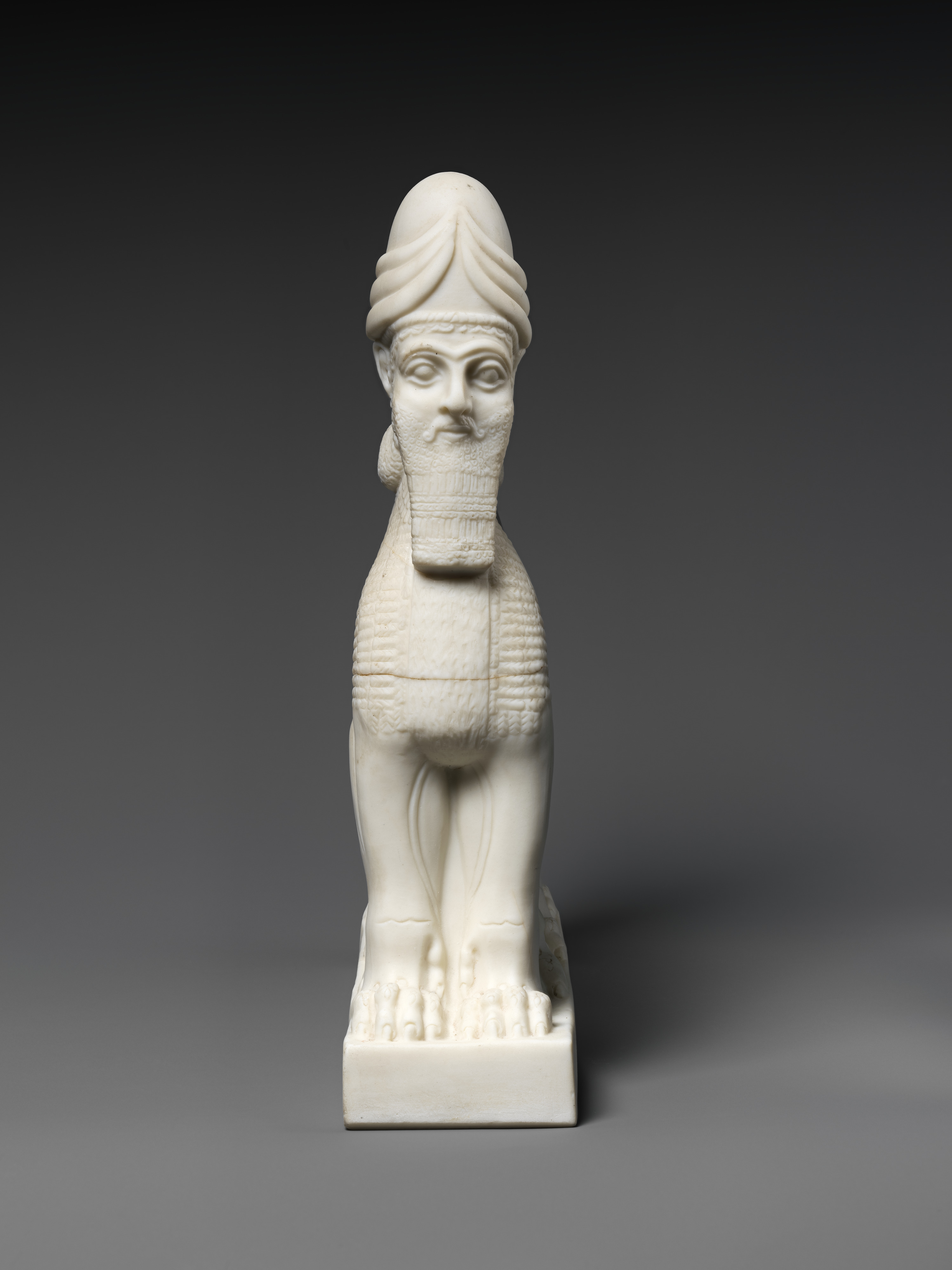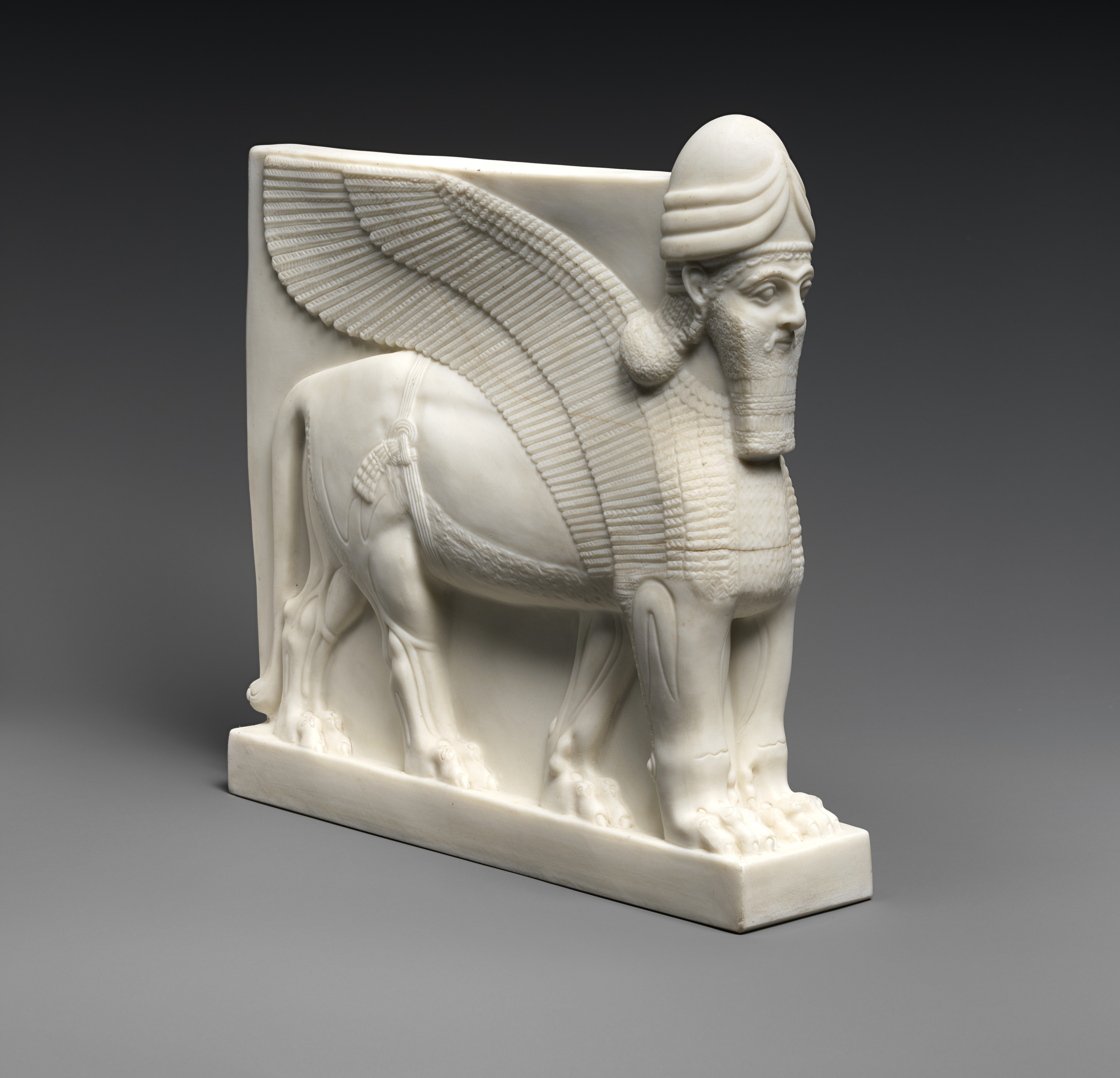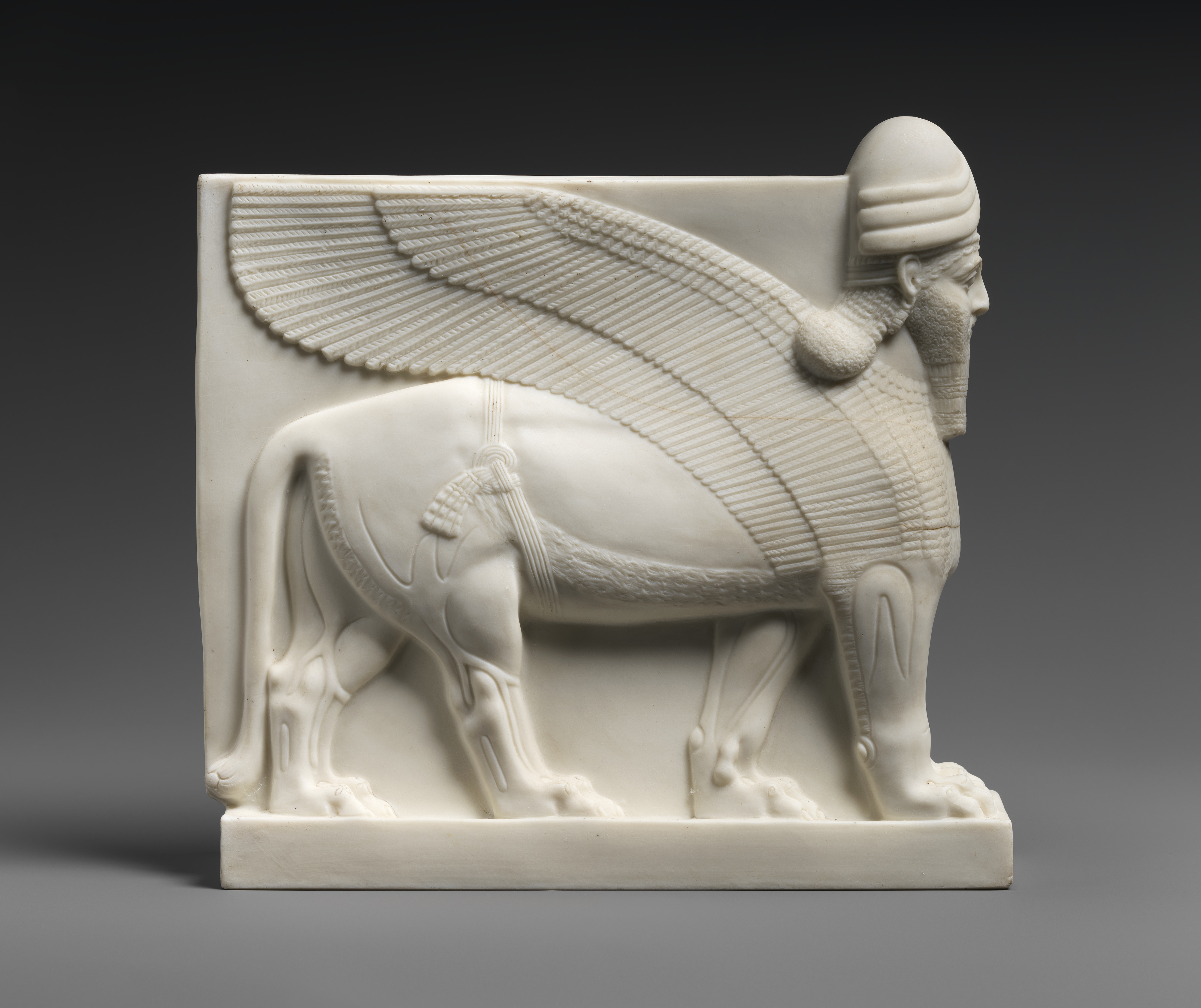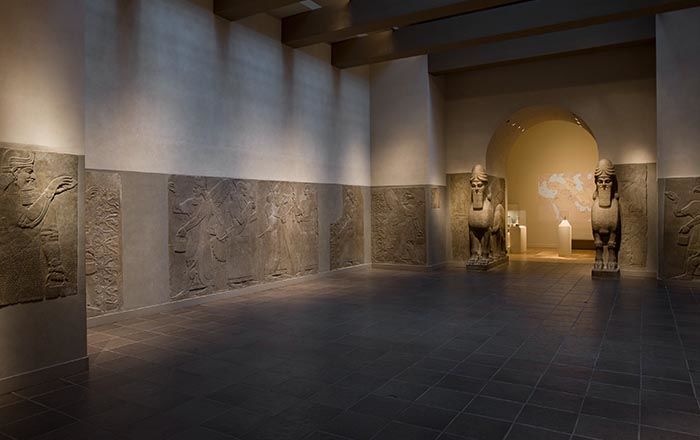Human-headed winged lion and bull
Not on view
Following the excavation of Assyrian palaces in the mid-nineteenth century, ancient Mesopotamian imagery began to be used in European decorative arts, including jewelry and ceramics. Publicity in the form of news coverage and popular books around the excavations, removal of many sculptures from sites in northern Iraq to England and France, and public spectacles such as the reconstructed ‘Nineveh Court’ in the Crystal Palace at Sydenham, London, fostered a fascination with Assyria and Assyrian art among the Victorian public.
These sculptures are part of a series designed by Aaron Hays, a sculptor who worked at the British Museum, for sale both as decorative objects and as tools for teaching and study of the ancient sculptures. They are made in Parian ware, a ceramic recently developed at the Copeland factory that could be poured into molds to form complex shapes and whose pale finish was intended to evoke the Parian marble used in ancient Greek and Roman sculpture. This was not the gypsum alabaster of which the Assyrian sculptures themselves were made but was clearly suited to Victorian decorative tastes. The two figures here are miniature versions of a type of guardian, called lamassu or shedu; the originals were monumental sculptures that stood flanking important gateways in Assyrian palaces. At the time of the excavations these winged lions and bulls became icons of Assyrian art for the European public, and their images were reproduced in many media. These two sculptures are closely based on a particular bull and lion from Nimrud, ancient Kalhu, that were brought to the British Museum. Very similar sculptures from the same palace are today in The Met (32.143.1 and 32.143.2). The lion is a quite faithful copy of the Assyrian original. The bull is more complicated: in theory it is based on a bull from a different Assyrian palace at Khorsabad, ancient Dur-Sharrukin, but while its headdress is copied from that sculpture, the proportions of head and body are closer to the figures from Nimrud, making the lion and bull in the series feel like a matched pair. Unlike the originals, whose bodies were only carved on one side as the other was built into the wall, the Victorian pieces are modeled fully in the round.
This image cannot be enlarged, viewed at full screen, or downloaded.
This artwork is meant to be viewed from right to left. Scroll left to view more.
